AP stats General Multiplication Rule
1/6
There's no tags or description
Looks like no tags are added yet.
Name | Mastery | Learn | Test | Matching | Spaced |
|---|
No study sessions yet.
7 Terms
In Texas Hold’em poker, two cards are death to each player. The best staring hand is two aces. Draw a tree diagram showing all the possibilities of getting Aces vs no aces for each card dealt.
One branch, then 2 branches stemming from each
Let’s formalize all of the probabilities we see per branch
P(A)→ A= P(2ndA | 1stA) + Ac = P(2ndAc | 1stA)
P(Ac)→ A= P(2ndA | 1ndAc) + Ac = P(2nd Ac | 1stAc)
the entirety of 2nd branches are all conditional probabilities
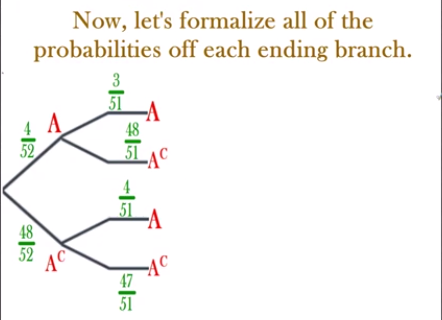
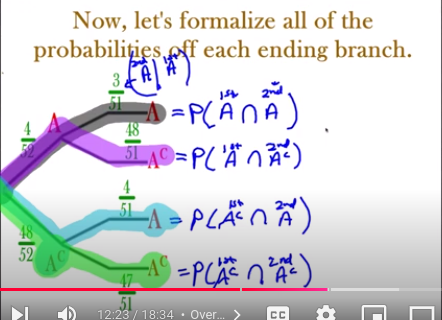
1st , 2nd branches, 3rd branch, 4th branch
A → A = P(1stA ∩ 2ndA)
A →Ac= P(1stA ∩ 2ndAc)
Ac → A = P(2ndAc ∩ 2ndA)
Ac → Ac = P(1st Ac ∩ 2ndAc)
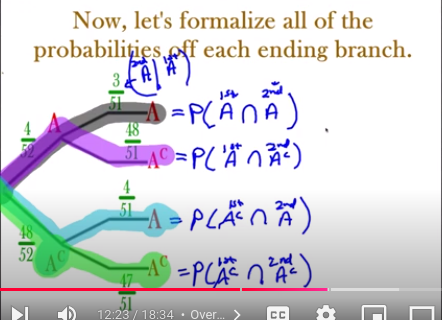
General Multiplication Rule
P(A and B)
= P(A) times P(B | A)
What’s the probability you are dealt two aces in a hand?
Multiply very first branch to the 2nd one for each (4x)
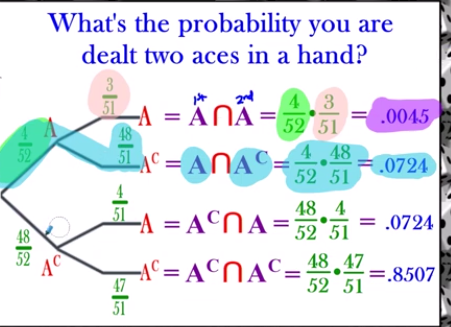
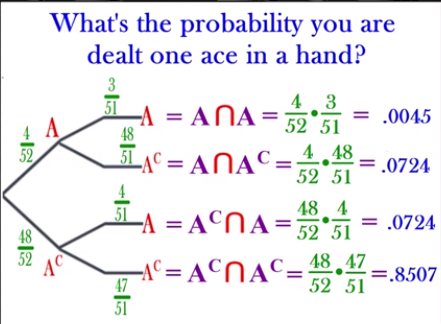
What’s the probability you are dealt one ace in a hand?
Which event represents getting 1 Ace?
A ∩ A NO! → 2 aces
A ∩ Ac YES! → 1 ace
Ac ∩ A YES! → 1 ace
Ac ∩ Ac NO! → no aces
Add the Yes events,
0.724 + 0.724 = .1448
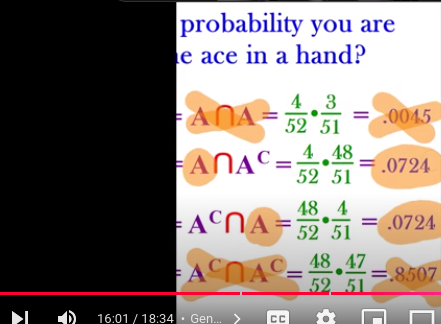
What’s the probability you are dealt at one ace in a hand?
Choose the events that have at least 1 ace
A ∩ A YES! → 2 aces
A ∩ Ac YES! → 1 ace
Ac ∩ A YES! → 1 ace
Ac ∩ Ac NO! → no aces
I could either add up all values, or just subtract from the one that isn’t valid by 1
1 - .8507 = .1493
